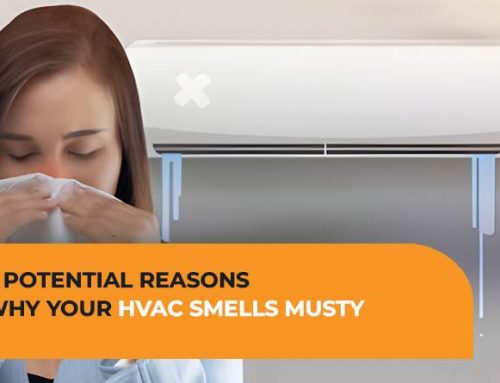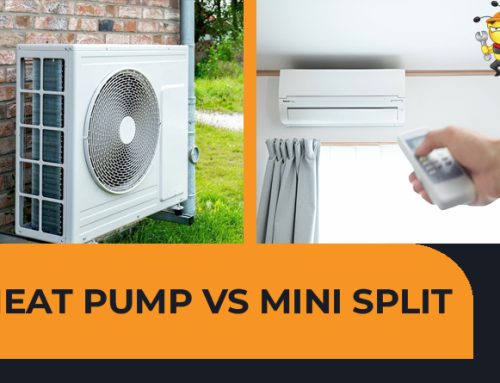Dampers play a vital role when looking forward to the needs of a cooling or heating system. Dampers are essential to HVAC systems to determine which part gets heated or cooled down in the desired settings.
Dampers are available in different structures and configurations and serve different purposes, from maintaining airflow to speed control. They act as a door or a dam that allows the controlled flow of air, gasses, or liquids in an HVAC system.
Moreover, it requires dampers to maintain the airflow, especially when temporarily shut down for service or repair.
Today, we will discuss a damper and how it works in several configurations, operational designs, and manual to automatic settings.
Moreover, The Bee Heat & AC offers extensive heating and air conditioning services in Arizona & Colorado, from boiler repair and installation services to affordable replacement options and free estimation services.
Let’s briefly describe the common and different damper types in an HVAC system and how they help your system operate.
What is An HVAC Damper?
A damper in an HVAC system is like a dam that allows, stops, redirects, and stops the airflow within the ducted system. It is a moveable plate that regulates the flow of air and also aids in adjusting the room temperature.
In addition, they play a crucial role in your zoning or control systems as they are for air ducts located between the truck line and the round supply duct. Air dampers are a critical part of the industry, where dampers offer a controlled flow of materials.
How Does a Damper Work?
The damper operates as a value in the ducts by determining the amount of cooled or heated air flow that passes different places in the ductwork.
Additionally, AC repair services help choose which part of your property needs heating or cooling control systems.
HVAC dampers control the airflow to different parts of the household or property regardless of the weather. The ductwork raises or lowers the zone temperature up to the desired level.
Types of Dampers in HVAC
HVAC dampers are available in different sizes, configurations, and dimensions. Choosing the right type of damper is crucial for HVAC needs. Various types of HVAC dampers exist in different structures, and their purpose is the same.
Here, we share a few of the kinds of dampers commonly used:
1: Blade dampers
Made with thin metal plates, the blade dampers regulate the airflow inside air-handling equipment such as industrial chimneys, airflow ducts, and HVAC systems. This type of damper has a metering and control design and has greater strength and superior sealing capacity.
Blade dampers produce less noise and come in two types: parallel and opposed dampers.
- Parallel blade dampers: Their blades move in the same direction and maintain the airflow.
- Opposed blade dampers: As the name reveals, they move in opposite directions and aid in directing the airflow in opposite directions.
2: Guillotine dampers
This type of damper is best known for offering the best sealing ability in heating and cooling systems. They operate by completely shutting down the airflow and are placed where proper isolation is needed for regular maintenance.
However, one drawback of choosing this type of damper in HVAC is that they are best for temporary use when maintaining the airflow in an HVAC system.
Any AC installation and repair company can install this damper where positive isolation is needed.
It offers the best function needed while your HVAC system is under maintenance or service.
3: Butterfly dampers
This type of damper is also famous as disk dampers, which come with a rotating disc that spins inside the duct. They are easy to install and maintain as they are simple and come with high efficiency and low maintenance.
Additionally, butterfly HVAC dampers allow precise control of airflow for immediate stoppage. They can completely stop the airflow with the availability of multiple blades.
One of the most critical factors about butterfly dampers is backdraft prevention, which potentially enables the air to flow in a single direction. Further, their applications occur in fire prevention and heating applications.
4: Inlet Vane damper
Each damper type installed in buildings and other professional setups serves different setups. Inlet vane dampers have broad applications for better flow and pressure controls of materials.
They have multiple blades designed around the central hub to improve overall performance.
Generally, these dampers allow for reducing the fan pressure while maintaining the speed by using their unique fan properties. In addition, inlet vane dampers are the best choice for controlling building airflow.
5: Louver dampers
Louver damper is a dual-purpose device that works by integrating the functions of both a damper and a louver. They are extensively used in higher-pressure environments.
With adjustable blades, louver dampers are a common choice to regulate the airflow while shielding in certain conditions such as rain and snow.
Moreover, this type of damper is perfect for commercial buildings, warehouses, and industrial facilities to balance environmental conditions and airflow.
The Bottom Line
To sum up, choosing from different dampers is necessary to take advantage of its advantages fully. It is unfortunate if you invest in a type of damper that needs fixing and repairs now and then.
So, one must look for different dampers and their use in buildings before choosing one. You can achieve maximum output with a long-term air conditioning system.
If you want your dampers to last long, you must maintain them well by checking, cleaning, and repairing them. Contact The Bee Heat & AC to install and repair all your heating and cooling system maintenance needs.
FAQs
How many types of HVAC dampers are there?
Dampers are based on control, balance, zoning system, and safety. Depending on their structures, shapes, and functions, they are categorized as butterfly, blade, inlet vane, Louver and many other types.
How many dampers are on the HVAC?
Dampers are typically located on multiple system ducts, especially after and before the major junctions. The two dampers are primarily found in every mainline 90 degrees apart.
What are dampers in AHU?
An AHU requires the dampers to control the outdoor air entering the air, the amount of return air, and the air exhausted from the system. So, the dampers are installed accordingly, looking at their different functions.
What is the difference between a backdraft damper and a balancing damper?
A backdraft damper allows the flow in one direction and does not change the direction or reduce the flow. Meanwhile, the balancing damper uses rotating shutters to control airflow and speed.


